Butterfly Art and Beyond
This week, I have some butterfly art, stories from the past, and plenty of inspiration for art-making.
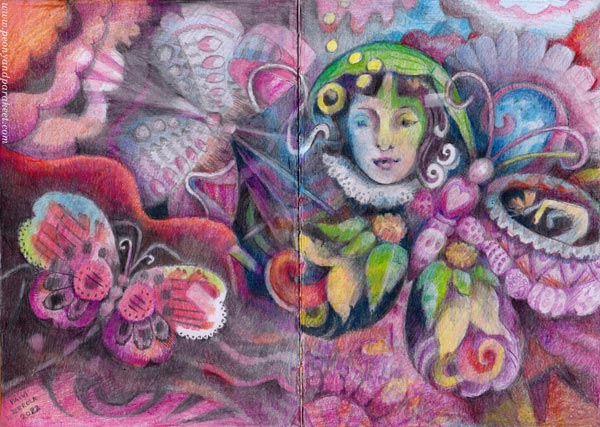
Here’s the newest spread of my colored pencil journal. I think it’s a little different than the pages so far – more detailed at least! You can see most of the previous spreads in this video; tell me what you think!
With this butterfly fantasy, I want to take you more than a hundred years back in time – to the end of the 19th century when a famous Finnish artist Helene Schjerfbeck (1862-1946) painted Violets in a Japanese Vase in 1890.
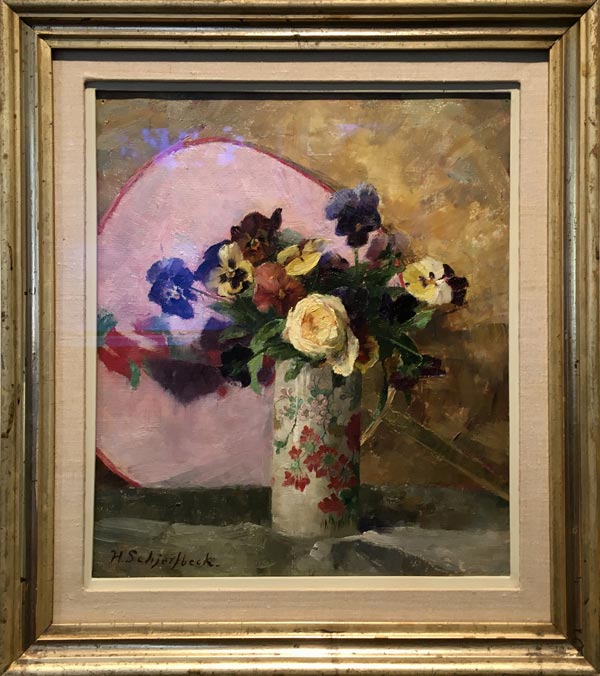
Although Helene wasn’t as famous back then, she had traveled and studied abroad. And now, she had just got back home after spending a year in Paris and England. After painting people, Helene was now drawn to make nature-themed pieces. It felt refreshing to change big and challenging portraits to small landscapes and still lives. Flowers became Helene’s consolation pieces. When she was sent to St. Petersburg to copy Russian masterpieces and thus bring educational reproductions to Finland (“here’s how the masters paint”), she painted flowers for her own joy in the evenings. (See Helene Schjerbeck’s later style and my adaptation for colored pencils in this blog post!)
I can relate to Helene. My main work is big oil paintings – abstract florals or landscapes – but I also make art that soothes and maintains rather than breaks through. While the first pieces of the new series are drying and waiting for their next layers, I feel drawn to the boxes of pencils.
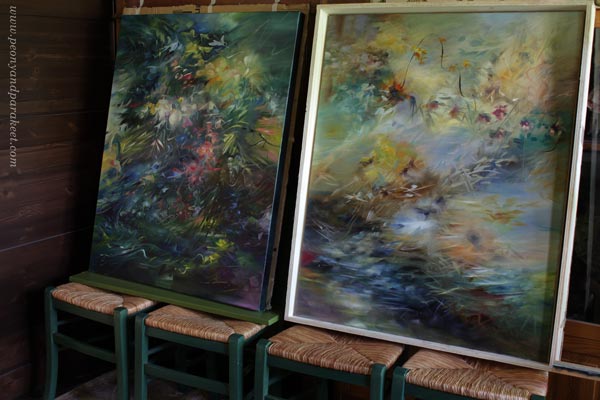
At the beginning of the week, after painting the whole Sunday, I wanted to draw something just for me. “Butterflies!” my inner child asked.
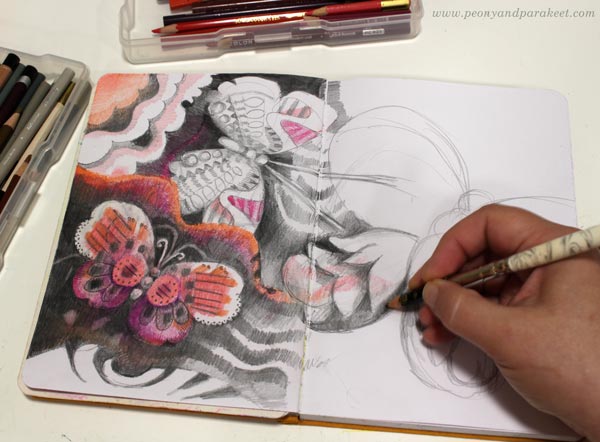
Here’s how far I got in one evening. This was before I traveled back in time to meet Helene – and another artist called Torsten Wasastjerna!
Fantasy Art in Villa Gyllenberg
In the middle of the week, my husband and I visited Villa Gyllenberg in Helsinki. It’s a museum that used to be the home of Signe and Ane Gyllenberg in the 20th century. The house was built in 1938, and it has a wonderful location near the sea.
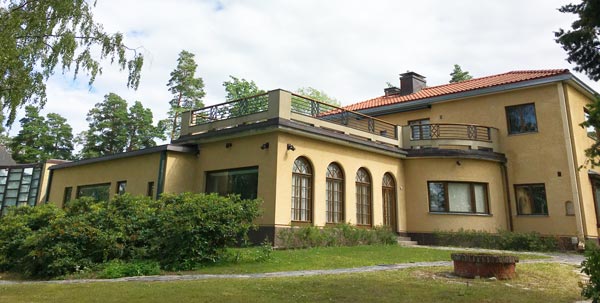
A part of the museum is a furnished old home with an extensive art collection, including Helene Schjerfbeck’s violet painting.
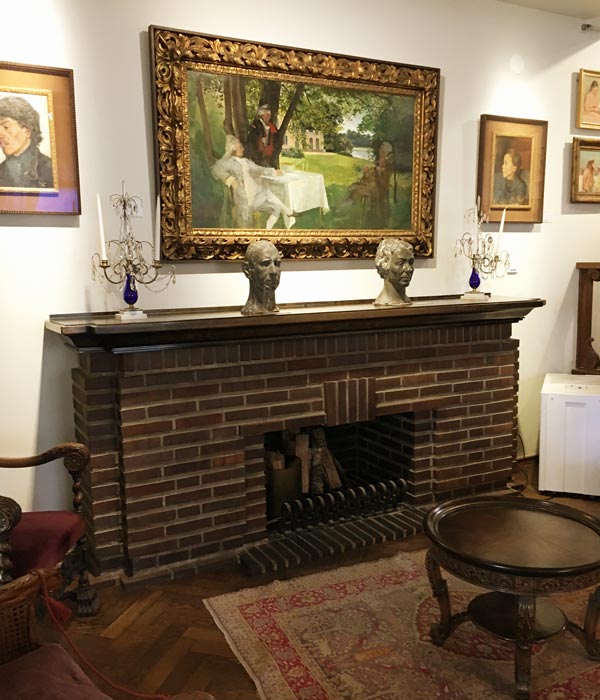
Just recently, Villa Gyllenberg got a new extension for art exhibitions. The new space has high walls and plenty of space, but still, there was something too big to fit there straight!
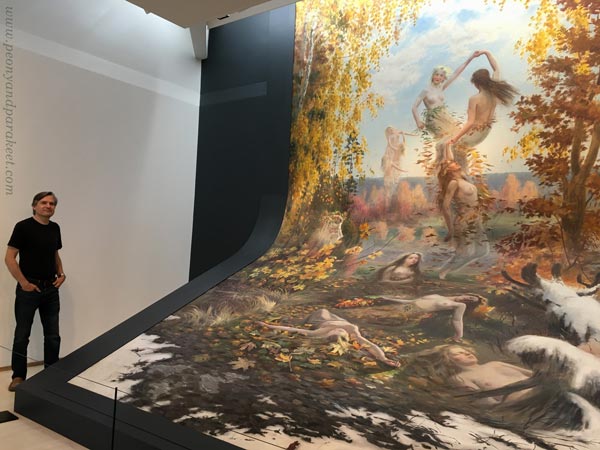
This is Torsten Wasastjerna’s oil painting Falling Leaves, made in 1897. It’s 550 cm high and 370 cm wide, one of the biggest Finnish paintings ever. My husband agreed to model beside it so that you get an idea of how big it is.
Inspired by Torsten Wasastjerna
Like Helene Schjerbeck, Torsten Wasastjerna (1863-1924) got an education in fine art and studied abroad too. But his consolation was fantasy. He did commission portraits to pay the bills but loved illustrating fairies and angels. He even wrote books. The first one was called Dröm och Värklighet – Dream and Reality.
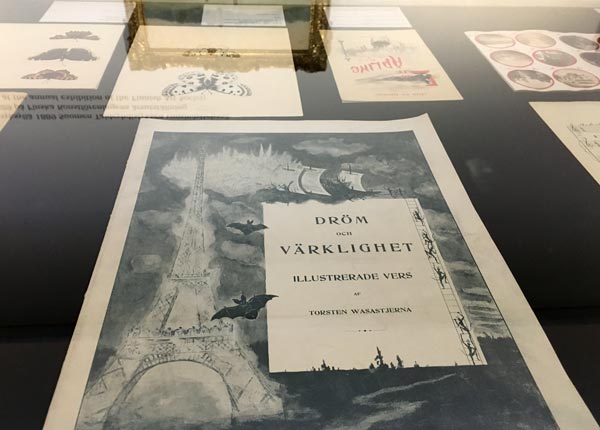
Torsten Wasastjerna’s fantasy world wasn’t as surreal as mine, but it felt close.
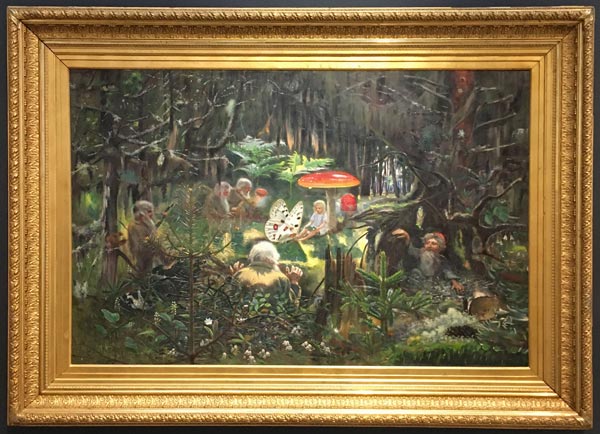
When I got back home, I was inspired to work on the butterfly piece with much more detail than I first had planned.
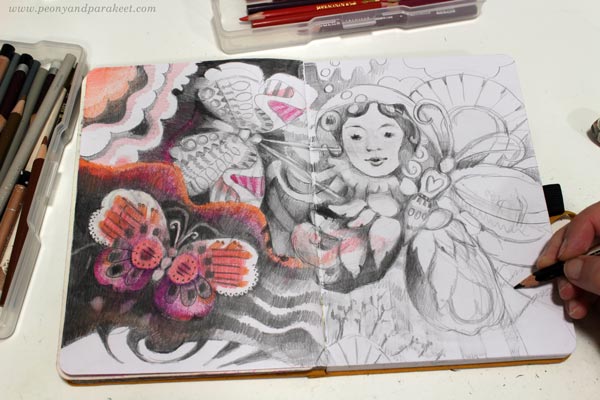
I added a person, a butterfly girl or a boy, to one of the wings.
Butterfly Art and Beyond
I am impressed by how dedicated Torsten was to his fantasy art, even if it was not valued by others.
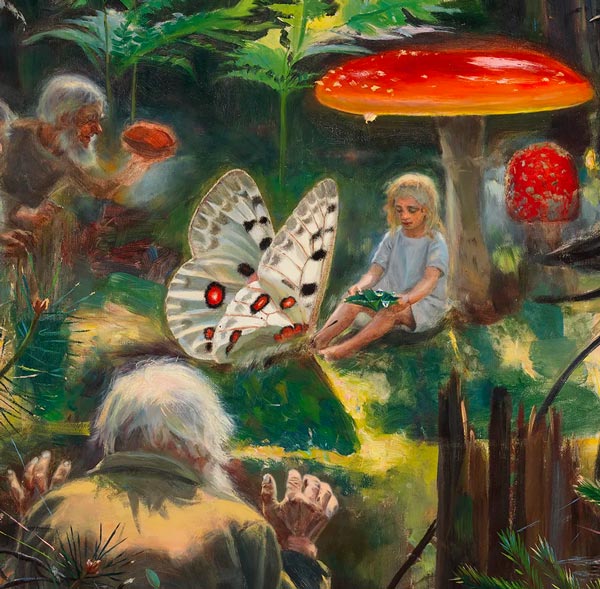
It made me think that I, too, can create “butterfly art” that goes beyond the butterflies – that challenges both my imagination and dedication.
So, I spent more hours than normally with this spread, adding details and then adjusting their shapes and colors.
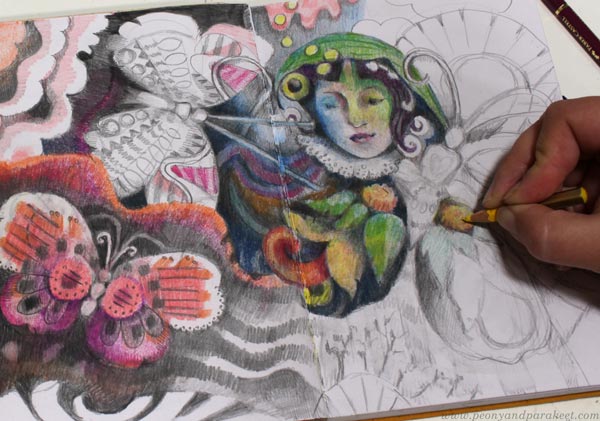
It felt like my pencils reached a new level, getting closer to my heart than before.
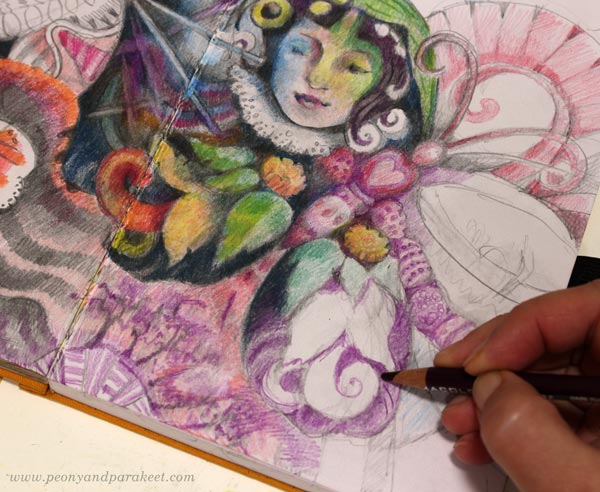
The world that is naturally and effortlessly born in my paintings fed the more illustrative work too.
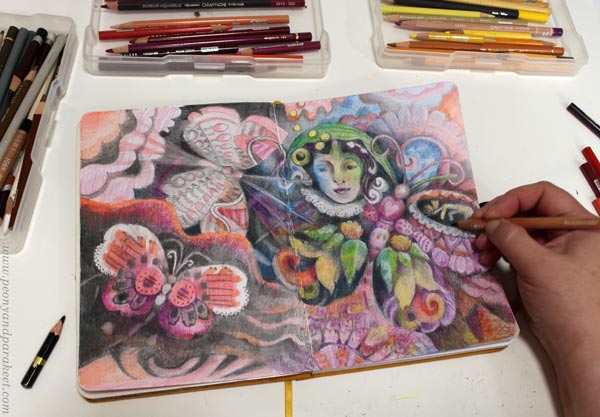
All this makes me think about how important it is to go to see art and use that for inner discussions: how am I different, what are my consolation pieces, and how do I show my dedication to art? Then butterfly art can go beyond butterflies in the same way as Helene’s violets are not just “violet art.”
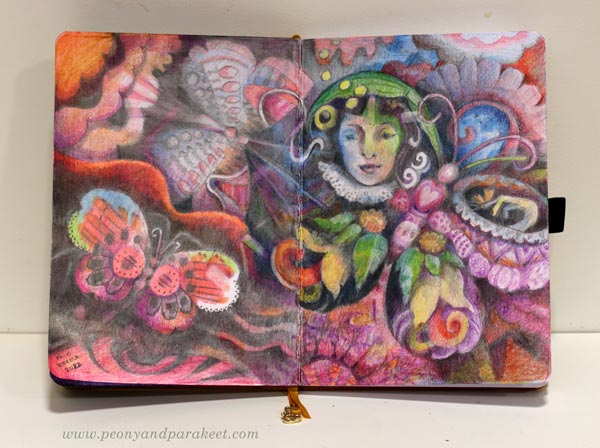
What do you think?
8 thoughts on “Butterfly Art and Beyond”
Comments are closed.
So beautiful, so Paivi! Loved your process and your stories and art of artists I never knew about, but now I do!
Thank you!
Thanks, Gina!!
Absolutely gorgeous work, my dear. You inspire me. 🤩
Thank you, Juliet!
Helene Schjerbeck (how did I miss that post 5 years or so ago?) and Torsten Wasastjerna are new to me. I love her contrasting tonal values and his independent style, but most of all I love the way you’ve adapted her portraits to be more like your own approach. There’s a term for this that I scribbled down from the radio news this morning: “Creative Ingenuity”. The three of you have that by the bucketful, Päivi! So admirable!
Thanks so much, Cathy!!
Päivi!
So again, you have created another magical description about all the fantasies from my childhood that still pull at me either in dreams (nocturnal) or dreams (by day)!!
I already had a go at the Helene Schjerfbeck idea, you may remember, which I absolutely adored! Torsten Wasastjerna’s work (I never heard about him before) is pure fairyland and I think I see some of it in more contemporary fairy art–I wonder if Rien Poortvliet who illustrated “Gnomes”, for instance, might have been influenced–or some of the fairy illustrators of the early 20th century? I would love to read Wasastjerna’s book!
Thank goodness all this wonderful art like the exquisite “Falling Leaves” is being preserved for the future!
Your butterfly crayon drawing takes me to the realm of richness, depth and colour seen in intricate Elizabethan embroidery which I have loved… the sweetness of that face seems to come out of some novel I may have read–it has all the elements of mysterious beauty that remains through the ages! Thank you for another lovely entry in your sketchbook!
So much to see and contemplate–so little time!
Thank you, Louisa! I am glad you enjoyed the post. Torsten Wasastjerna’s fantasy art had no fans back then, but I think that if creating them now, he would have found his soulmates in the fantasy art world, lots of fans too.